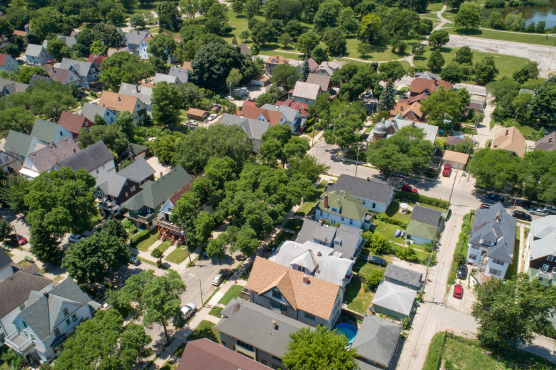Climate Change and Urban Trees
Wisconsin’s climate is becoming warmer and wetter, a situation that could challenge the sustainability of our community forests. Due to current and historic development, it is often already difficult to grow urban trees. Understandably, climate change is not always at the top of mind when considering what trees to plant and where. However, its potential role should be examined so that the trees planted now can grow and thrive into the future. A warmer climate may also enable the introduction of additional species in Wisconsin. While introducing new species needs to be pursued with caution, these species could help diversify the urban forest [PDF], especially considering the loss of trees due to emerald ash borer.
The story map below uses research from the Northern Institute of Applied Climate Science and lists of tree species’ vulnerabilities [exit DNR] under different climate change scenarios for seven Wisconsin communities.
From those species lists, the Wisconsin DNR selected 12 trees which have lower vulnerabilities across the state under the different scenarios. These dozen trees do not represent an exclusive list of trees appropriate for your space and time but are meant to help illustrate possibilities. Speak with your local nurseries and arborists for their local species recommendations.
Story map
This story map helps to explain how the climate is changing and what trees may be able to succeed through the 21st century.
Launch story map
Urban Heat Islands
Densely developed urban areas tend to be warmer than more open rural spaces due to the concentration of manmade surfaces, such as asphalt and concrete, that absorb and reradiate heat. This phenomenon, known as the urban heat island effect, is further compounded by rising temperature trends due to climate change.
Urban neighborhoods are also affected by this heat island dynamic, particularly in large cities such as Milwaukee, where there is a great diversity of land covers and uses. To better understand this dynamic, the Wisconsin Department of Natural Resources worked with local partners to coordinate a heat mapping campaign in the City of Milwaukee in 2022.
Read about the project results in the Summary Report [PDF] or explore the city in an interactive map of the temperature data. Groundwork Milwaukee’s Climate Safe Neighborhoods dashboard [exit DNR] also hosts the data, including both the temperature and humidity maps. GIS image services are also available.
The project methodology, equipment and data analysis were provided by CAPA Strategies [exit DNR], and funding was through the National Oceanic and Atmospheric Administration’s National Integrated Heat Health Information System [exit DNR].

